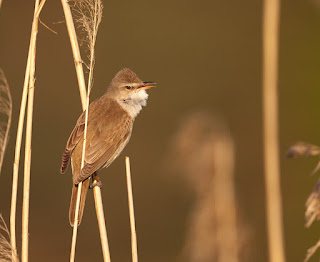Sunday was a much duller and wetter day than Saturday had been, but I still wanted to get out. I headed east to county Waterford intending to catch up with the Surf Scoter.
Driving over the mountains between Youghal and Dungarvan the cloud hung low and the drizzle was persistant. Things weren't much better as I descended into Dungarvan. For some reason I had kind of expected the Scoter to be viewable from the first roundabout opposite the GSK plant but I realised that was wrong when I looked there. I called Michael Cowming and he gave me directions over to Abbeyside church where the bird was on show between the lookout point and the tip of the Cunnigar.
Apparently just before I had arrived it had been 'really close', for me though it had swum over to the Cunnigar tip and remained there for most of the afternoon. I watched it for a while hoping that it might drift back but never happened. Still though the views were as good as I've ever had of this species. Only the third time I've seen one too.
 |
| Surf Scoter, Dungarvan, Co. Waterford - 2nd December 2012 |
Interesting also to watch it feed, as the diving action of Surf Scoter is distinct from the that of Velvet and Common Scoter, therefore being a useful ID feature. The bird dives with a small leap, flicking open its wings just as it disappears. Common Scoters hold their wings tight against their body as they dive and Velvet Scoters sort of slink into the water with open wings and no dive (see p.40 of the 2nd edition Collins Guide for some excellent diagrams).
 |
| Surf Scoter diving action - a leap with wings flicked open |
The Surfie wasn't the only bird there though. Three distant Long-tailed Ducks were a year tick for me. There were several small groups of Brent Geese present, feeding mainly along the shore, good numbers of Red-breasted Mergansers and Great-crested Grebes and a few Great Northern Divers.
 |
| Winter plumage Great Crested Grebe |
 |
| Fishing just off the Cunnigar tip - Great Northern Diver |
 |
| Two Brent Geese take flight with female Red-breasted Merganser in the background |
After about thirty minutes I got a text from Michael Cowming that he had a flock of Waxwings near the Campus garage on the N25. With the Surfie remaining on the opposite shore I decided to check the Waxwings out. However by the time I arrived they had dispersed and the best view I got was of a single bird perched high in tree somewhere within a housing estate off the N25. I drove around for fifteen minutes or so but just couldn't find the flock.
As I ate my lunch I decided to head back to Abbeyside and see if the Surfie had changed his mind and swum a little closer.
No such luck as I got there but to be honest having only see two Surf Scoters beforehand ever and about the same number of Long-tailed Ducks I was content to just watch the birds through my scope.
Michael arrived after about twenty minutes and told me that Colum Flynn had found a male Common Eider over on the eastern side of Clonea Strand. Again not a bird I've seen too often in Ireland so I took directions from Michael and headed off to find the bird.
It was one of those funny things. I found the spot Michael had described to me. I thought that seeing the bird would be a formality. After all, male Eiders are big bright looking things, even at a distance they tend to stand out. However I must have spent twenty minutes scanning the sea with my scope but had nothing. With evening pushing on I packed up my gear and got ready to head back to Cork. But I just couldn't accept that the bird wasn't in the area where Michael had described. I started up the car engine and couldn't resist one final glance through my bins, and there it was! About one hundred meters off-shore (and as I was about the same distance from the shore itself, that made it too far for even a record shot). But still a fine looking bird all the same.
With three year ticks under my belt I headed back to Dungarvan for one final check around the Campus garage for the Waxers.
This time they played ball. Driving back up the N25 towards the garage I spotted them perched confidently in a tree. There was already a couple of non-birders taking some shots of the flock (great to see that, maybe the sight of a Waxwing flock will be the spark for some budding birders out there).
I pulled in on the hard shoulder, got my gear out and managed a few shots in the gathering gloom (it had gone 4pm by now).
The birds dropped from their tree perch at one stage to feed on the cotoneaster berries which lined the footpath. I had to duck as they flew past within inches of my head. It was a real pity the light was so low but I picked off a couple of records shots before calling it a day.
 |
| Waxwings, Dungarvan, Co. Waterford |
My thanks to Michael Cowming for keeping me updated all afternoon with 'gen'. It's always a pleasure to bird in Co. Waterford.




















































